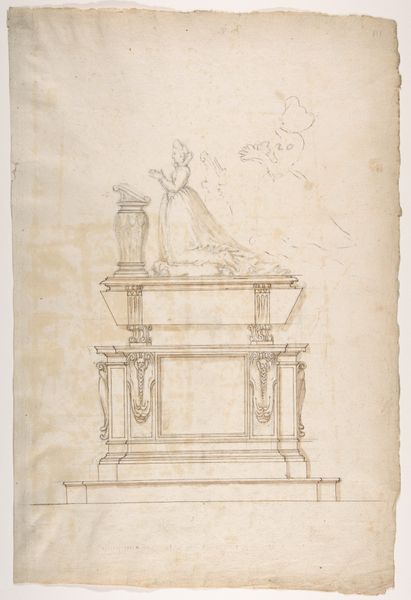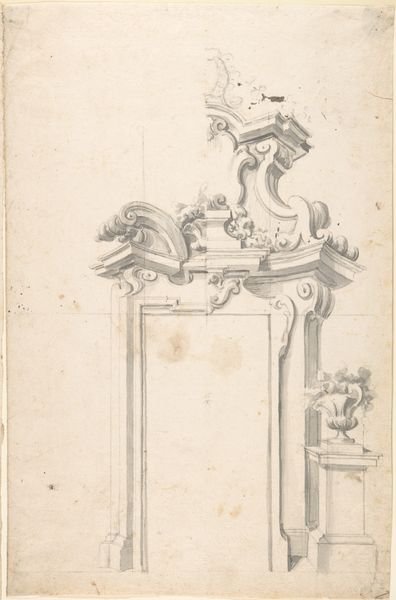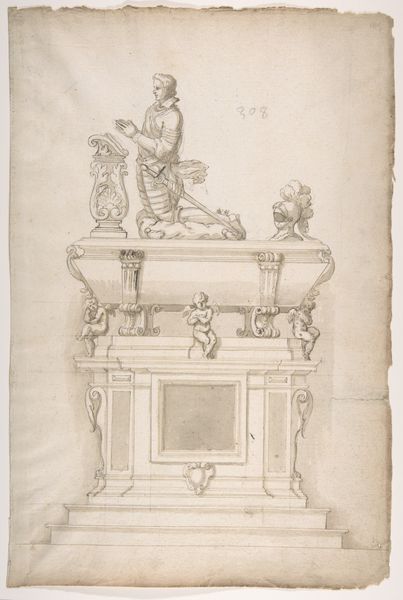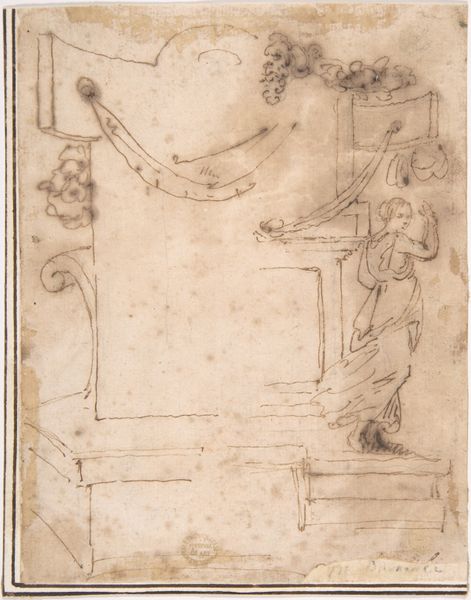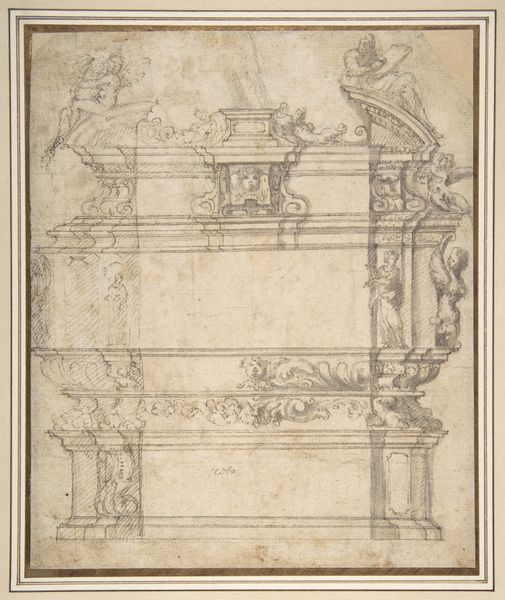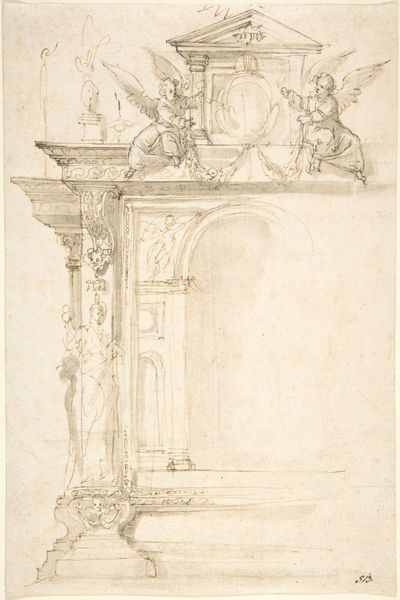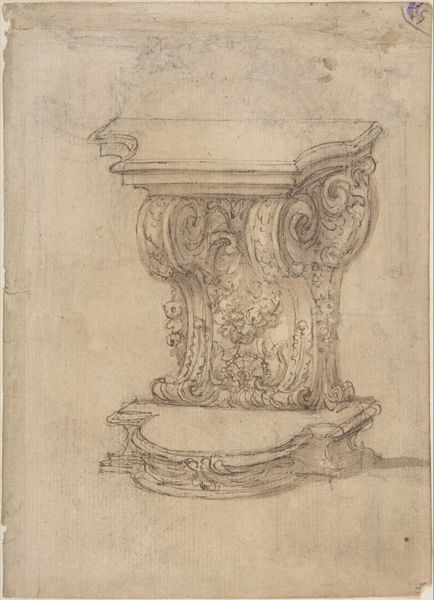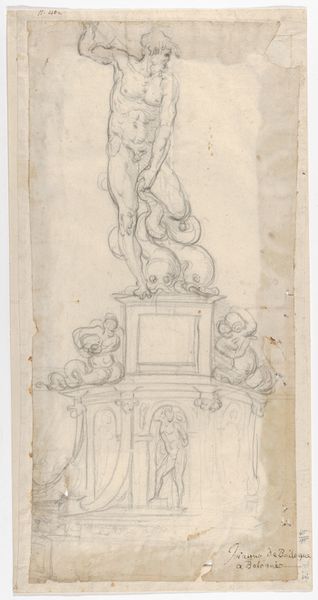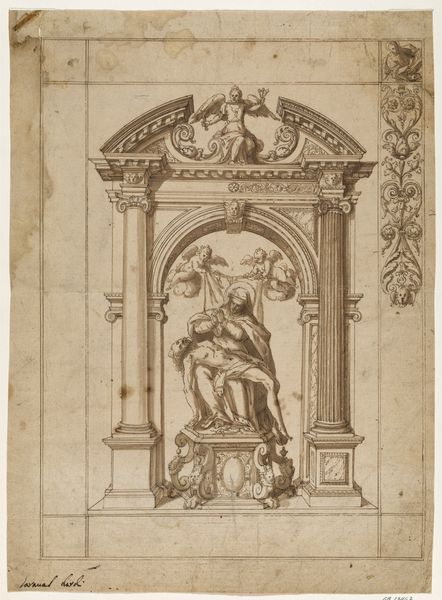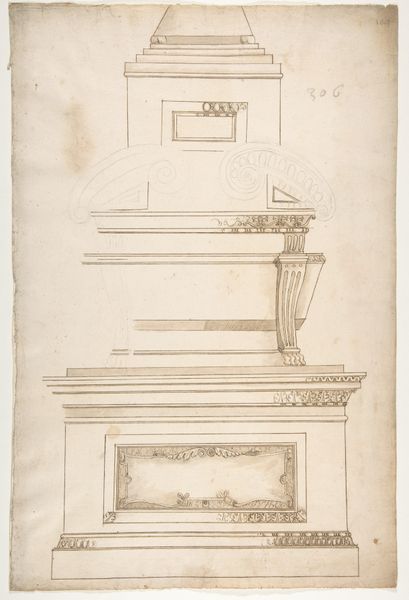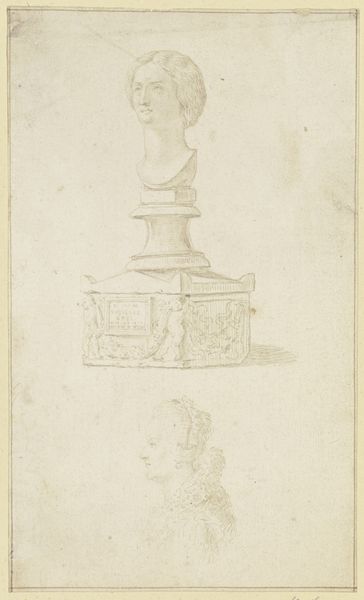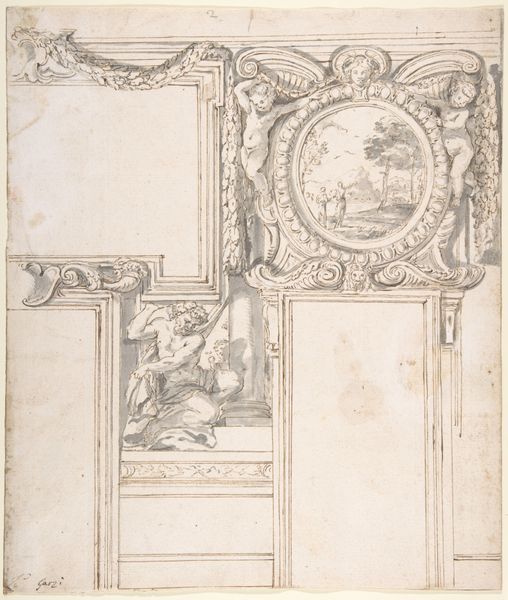
Partial Design for a Tomb with a Seated Male Figure Holding a Shield (recto); Partial Design for a Tomb with a Seated Male Figure, Putti and an Obelisk (verso) 1500 - 1600
0:00
0:00
drawing, print, paper, pencil
#
portrait
#
drawing
# print
#
pencil sketch
#
figuration
#
paper
#
form
#
11_renaissance
#
pencil
#
men
#
line
#
italian-renaissance
Dimensions: 10-11/16 x 7-9/16 in. (27.1 x 19.2 cm)
Copyright: Public Domain
Curator: This drawing, attributed to an anonymous artist from the late Renaissance, offers a partial design for a tomb. Executed in pencil on paper, around 1500-1600. It’s currently held in the collection of the Metropolitan Museum of Art. Editor: The first thing that strikes me is the delicate precision of the lines. The composition, although a partial design, conveys a sense of monumental scale despite its appearance as a study on paper. Curator: Absolutely. And what’s particularly intriguing is the figure of the seated male holding what appears to be a shield. He embodies, I think, the idealised male form so prevalent during the Renaissance, connecting concepts of masculine identity with civic virtue. This echoes classical ideals. How do you interpret this aspect from a formal perspective? Editor: Well, looking at the formal choices, note how the figure’s musculature is emphasised through hatching and shadow, but that shield seems to me as much an empty frame—a void or absence where the viewer is invited to contemplate their own mortality. Curator: An excellent observation, particularly in light of tomb architecture being a marker for lineage. The blankness can reflect power relations in Renaissance society – perhaps an indication of erasure. Considering also the drawing’s verso, which includes putti and an obelisk, it's hard not to perceive a visual dialogue exploring concepts of immortality and societal influence. Editor: The contrast between the robust male figure and those softer putti on the back really does play with symbolic form and substance. Curator: These symbolic components aren’t merely decorative; they are active parts of creating meaning about legacy. This era sought to immortalize power but often struggled to divorce itself from older pagan symbolisms that predate contemporary belief. Editor: I see how you use the intersection of cultural symbolisms and artistic forms to offer deep insights. My work here focuses more on the dialogue within the artwork. I find the visual push and pull within that Renaissance idiom captivating. Curator: Agreed. And it underscores the necessity of interdisciplinary views to appreciate art's total historical reach, extending, altering, and reframing historical meaning and lived existence.
Comments
No comments
Be the first to comment and join the conversation on the ultimate creative platform.
